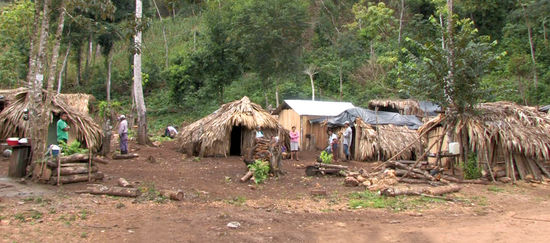Line 9: The Tar Sands Come to Ontario
Line 9 was built in 1975 to transport imported oil from Montreal to refineries in Sarnia. Enbridge has now applied to Canada’s National Energy Board to reverse its direction of flow so that it can transport oil from Sarnia to Montreal.
Enbridge admits that among the possible uses of Line 9 is transporting “heavy oil” a category that includes bitumen, the hazardous raw material extracted from tar sands.
The pipeline passes through cities, watersheds, rivers, and farmland. 9.1 million people live within 50 km of line 9, including 18 first nations communities and 115 communities in total. (Sarnia, Hamilton, North York, Kingston, etc.)
Enbridge has a very poor record of environmental impact. Between 1999 and 2008, Enbridge lists 610 spills that released approximately 21 million litres of hydrocarbons into the surrounding area. But Enbridge is most well-known for their 3.8 million litre spill in Kalamazoo Michigan in 2010, amounting to the largest inland oil spill in US history. Because the spill involved the very hard to clean tar sands bitumen rather than conventional crude oil, the clean-up is still on-going. Meanwhile to this day, residents are still sick from the aftermath of the spill, and tragically many have died since. Most troubling for Ontario residents is that the pipeline that ruptured in Kalamazoo is almost identical to Line 9: it is part of the same pipeline network, uses the same interior lining, and is almost the same age.
With so much at risk, we need to work together to stop Enbridge Line 9. The big picture is spills, contamination, and expanding the tar sands. The even bigger picture is climate change. If it is not halted, climate change will and is resulting in increased frequency and severity of storms, floods, drought, and water shortage, as well as the spread of disease, increased hunger, displacement and mass migrations of people and ensuing social conflict and war.
For more information and to get involved:
facebook.com/RisingTideToronto
facebook.com/PeopleVersusLine9
stopline9-toronto.ca/
Facebook: Aamjiwnaang and Sarnia Against Pipelines (ASAP)
ienearth.org/
facebook.com/AntiTrailbreaker
pipeupagainstenbridge.ca/ (focus on B.C.)
Stop Line 9 Info
October 19
No Line 9! No Tar Sands Pipelines!
Saturday. October 19, 12 p.m.
Toronto Metro Convention Centre, 255 Front Street West
Oil giant Enbridge wants to use Line 9, a 38-year old pipeline to pump toxic tar sands east through Ontario and Quebec. Line 9 passes within 50 km of an estimated 9.1 million people, 18 First Nation communities, and 99 towns and cities, including Toronto.
From October 16 to 19, the National Energy Board (NEB) will be ‘listening’ to the public and industry on Line 9 in Toronto. Under Harper, the requirement for environmental assessments has been removed and only the NEB is charged with making the ‘decision’ on Line 9. To date, the NEB has approved over 99.9% of tar sands projects and is seen as an extension of Big Oil. In order to participate in the NEB hearings, citizens were given a 2 week window to fill out a 9 page application, after which the NEB determined who could speak. Many voices were excluded both by the process and selection criteria of the NEB.
Pipeline spills are not a matter of ‘if’ but ‘when’. The devastating spill in the Kalamazoo River in Michigan three years ago resulted in long term health and ecological problems, seventeen deaths, and to date, the spill has still not been properly dealt with because tar sands dilbit has been proven to be nearly impossible to clean up. Several months ago, a suburb in Arkansas was flooded with tar sands, necessitating an evacuation of the area and ruining the community. Aging pipelines simply cannot handle the chemical cocktail mix of tar sands bitumen which has to be transported at a higher temperature and pressure than regular oil.
The approval of Line 9 means an expansion of the Tar Sands which is poisoning Indigenous communities and traditional ways of life at the sites of production as well as refining. The Tar Sands are the fastest growing source of carbon emissions in the country, contributing to global climate change, which has resulted in extreme weather conditions around the world. The Canadian government subsidizes Tar Sands at $1.2 billion a year, funding that could easily be diverted and invested in local economies, green energy, and green jobs.
When our voices are muted by government, the streets become our megaphone. Both the Keystone XL pipeline going south and the Northern Gateway pipeline going west have been severely delayed and potentially blocked by strong coalitions of environmental, First Nation, student, community, and labour activists. Join us October 19th outside the NEB hearings as we say “No Line 9: No Tar Sands in Ontario!”.
Supporters:
Rising Tide Toronto
Toronto350.org
The Council of Canadians (Toronto)
Toronto West End Against Line 9
Toronto East End Against Line 9
Toronto International Socialists
GE Hitachi’s Uranium Secret in Toronto


